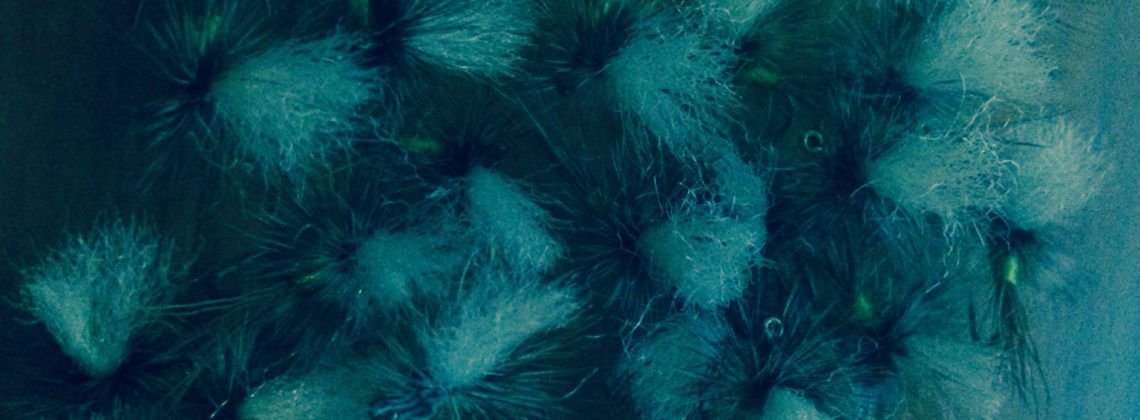Fishing the Evening Rise

Fishing the evening rise is one of the most enjoyable experiences in fly fishing. On a still evening when there is a big hatch pools come alive with fish. These fish can be technically challenging to fish to as they are often very fussy about what they will take.
I’ve fished the rise for over twenty years, and I learned a lot about casting and fishing technique in the evenings. Fishing the rise rewards good technique, as if you are not accurate you will not catch a fish, no matter how many fish are rising. In this series of articles I’ll outline my approach to fishing the rise.
Part I Tackle
I fish five weights for trout. I currently have four five weights, although I do not use one very often. My choice for the evening rise is a Scott Radian 904/5, a fast action 9 foot five weight rod. Note that while it is described as a fast action rod it is not as fast as other rods, and a lot slower than my Sage TCR 590/4.
I like a moderately fast rod for fishing the rise as it allows me to cast really, really accurately. Accuracy is the key to getting fish to take, and this means having a rod that can pick a line up and put it back down without a false cast at reasonably long distances. The Scott Radian does this very well, without being too fast to cast short distances or too fast to mean that you need absolutely perfect timing on the take.
Double Taper lines are what I use on all my five weights. I tested them with a DT and a WF, and the DT loads them a lot better. More importantly a DT does not have a belly and a running line, so you never lose your cast when the running line gets out of the rod tip. My favourite lines are Airflo Double Tapers as they load the rod really well. I’d prefer a dark olive colour to the Lichen Green but this works pretty well, and for the evening rise line colour doesn’t matter.
Accuracy is the crucial part of getting a rising fish to take. For this reason I fish a level 5lb leader of slightly shorter length than the rod. I measure this very carefully when setting it up, as if the leader is longer than the rod the transfer of energy is not as good and you lose a lot of accuracy. I don’t like tapered leaders for short casting, as my level 5lb leader works exceptionally well, and I don’t have to mess around tying on different sections of line to get the leader to turn properly.
The other advantage of a level leader that is not very long is that I always know where the fly is going to go. It turns beautifully and lays out really well, allowing me to be exceptionally accurate. I have fished the rise with my long leader and it is much harder to be accurate. In the dark I know exactly where my flies are if I have my short leader on. With my long leader I am guessing and nowhere near as accurate.
One of the key parts of my set up is my leader to fly line connector. If you are fishing a short leader the fly line can end up sliding back down the rod which is both annoying and time consuming. I use an Airflo Braided Loop on the end of my line, and set it up with about 25 to 35mm of frayed ends out the end of the plastic sleeve. This prevents the line from running back down through the guides.
Gear:
Rod: Scott Radian 905/4
Reel: Waterworks ULA 2X (Discontinued)
Line: Airflo Ridgeline Double Taper Lichen Green
Leader: Drennan Double Strength 5lb 8’6”
Leader/ Line Connector: Airflo Braided Loop, frayed.
Flies:
Dry: Parachute Improved Kruse Mayfly
Emerger: Hare & Copper #16 weighted
I. Fishing the Evening Rise | II. Flies | III. Strategy | IV. Strategy II | V. The Take & Playing the Fish | VI. A Parachute that Floats
